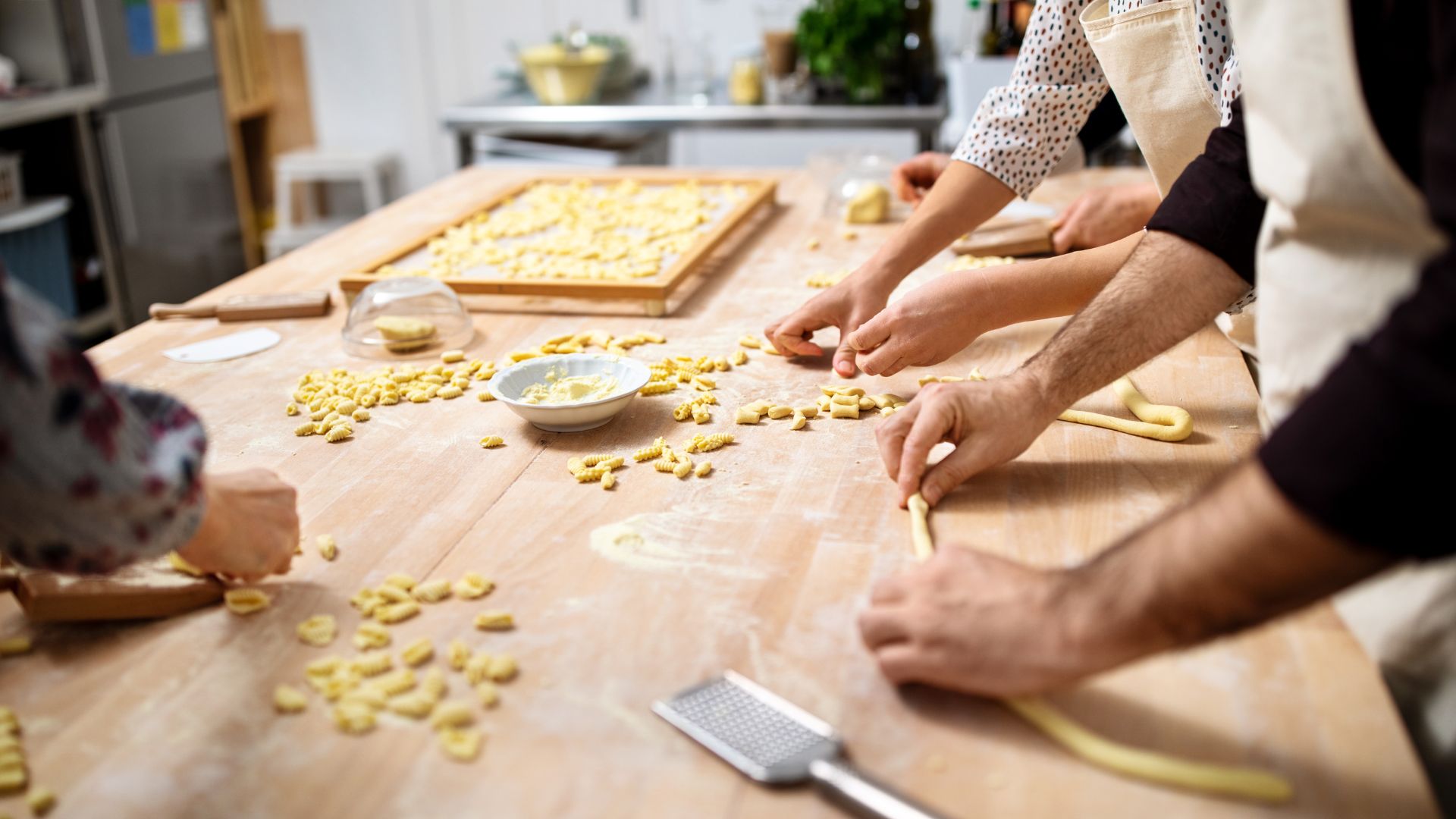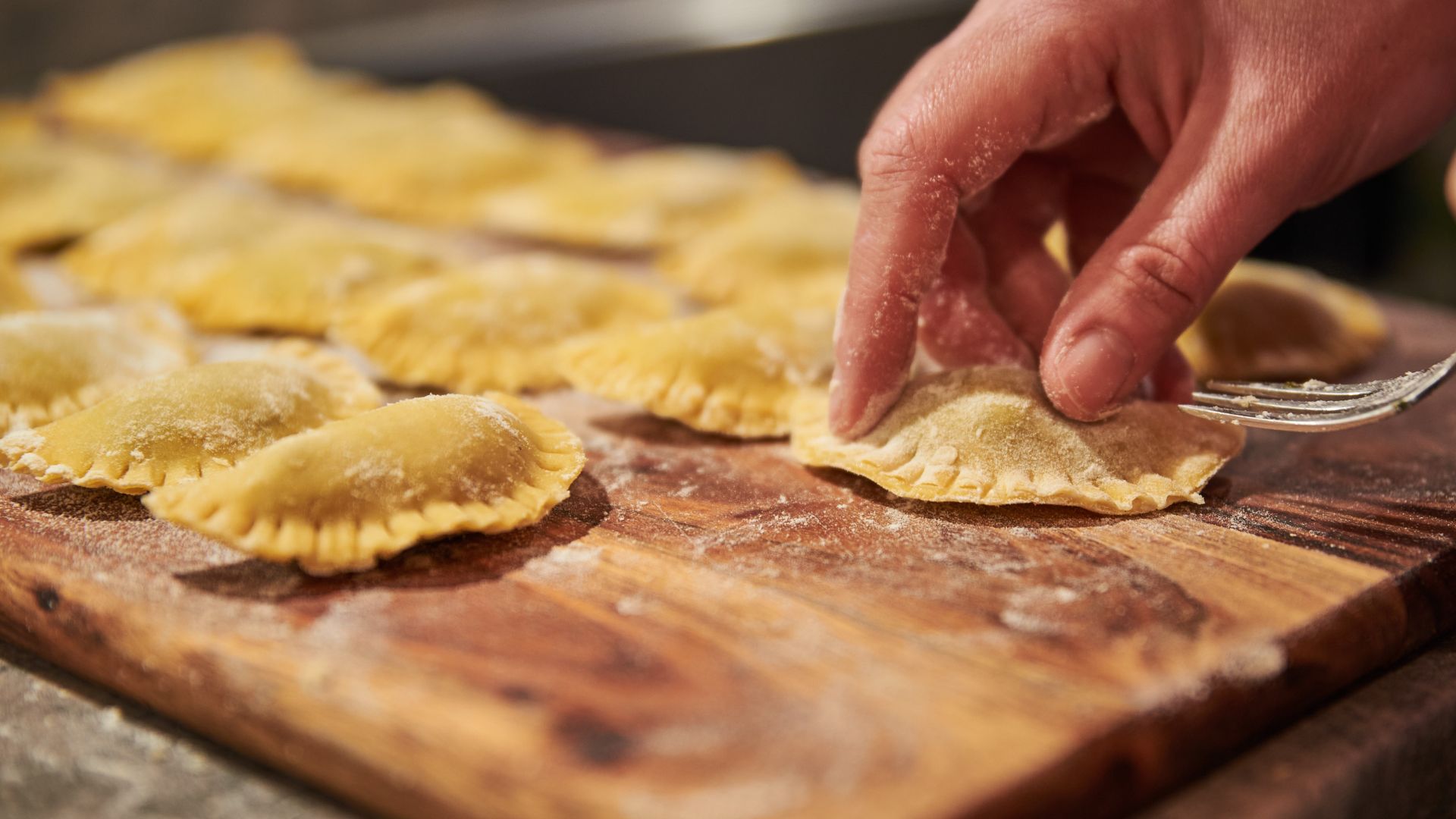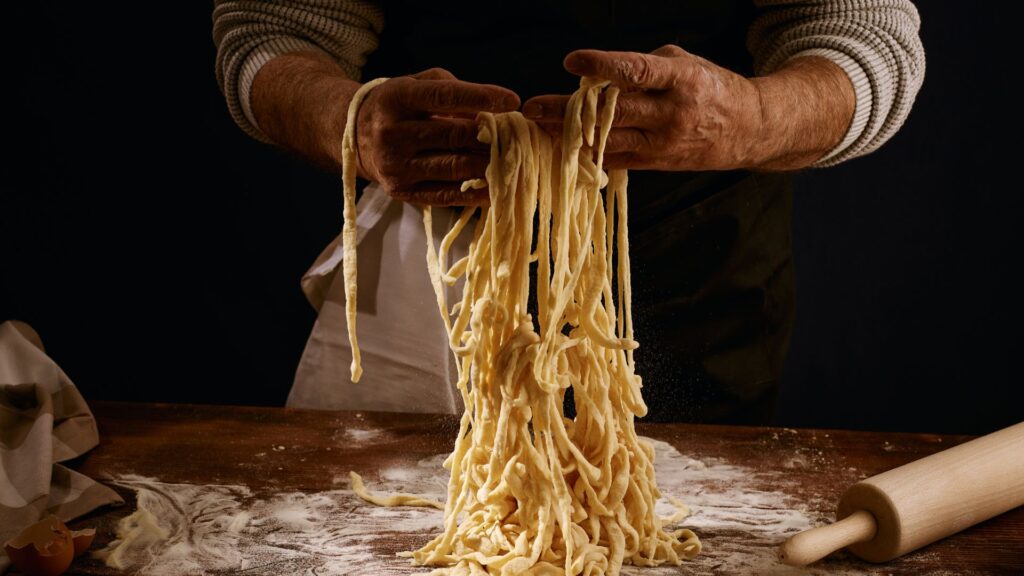There’s one thing magical about making pasta from scratch. The smooth resistance of contemporary dough below your fingers, the satisfaction of chopping strands of tagliatelle or shaping orecchiette—these are extra than simply culinary duties; they’re a journey into Italy’s wealthy cultural and gastronomic heritage.
For those who’ve ever puzzled concerning the totally different selfmade pasta varieties, or how Italians nonetheless roll out dough by hand of their household kitchens, this contemporary pasta information is for you. We’ll stroll you thru conventional Italian pasta shapes, provide you with recommendations on the best way to make pasta at dwelling, and share perception into pairing shapes with sauces like a neighborhood.
Whether or not you’re daydreaming a couple of journey to Rome or trying to carry Italian taste into your individual kitchen, that is your full information to mastering the artwork of pasta.
Why Make Pasta at Residence?
Let’s be sincere—store-bought pasta is handy. However selfmade? That’s the place the guts is.
While you make pasta at dwelling, you’re not simply getting ready a meal; you’re reviving a practice. Hand-rolled pasta has a texture and taste that may’t be replicated by machines. It absorbs sauce higher, it’s tender but toothsome, and it’s completely customizable—from thickness to form to substances.
Plus, nothing impresses dinner company fairly like contemporary fettuccine casually rolled out in your kitchen counter.
For those who’re touring to Rome, why not study the actual factor with locals? Be part of our fresh pasta cooking class in a historic Roman palazzo—you’ll grasp the fundamentals and take dwelling genuine Italian pasta recipes handed down via generations.
Necessities Instruments and Components for Recent Pasta
Don’t fear—you don’t want knowledgeable kitchen. The truth is, Italian nonnas (grandmothers) have been making pasta with nothing greater than a fork, a rolling pin, and picket board.
However understand that there may be some important software you need to have for making contemporary pasta, comparable to:
- Giant picket or marble work floor;
- Rolling pin (or pasta machine if you need further precision);
- Pasta cutter or knife;
- Fork (to combine dough);
- Clear cloths or trays for drying.
Additionally, you’ll want some key substances in your good pasta:
- Flour: “00” flour for silkier dough, or semolina for sturdier shapes like orecchiette
- Eggs: Ideally natural, room-temperature
- Water: Particularly for eggless pasta
- A pinch of salt, a drizzle of olive oil (elective), and a great deal of ardour
Need a deeper dive into pasta-making prep? Our Roman Pastas cooking class will train you the best way to make from scratch the world-famous roman dishes like Carbonara, Gricia or Amatriciana!

Traditional pasta dough: Eggs or No Eggs?
In Italy, delicacies is a severe matter, typically giving rise to passionate debates throughout areas. One among these issues the usage of eggs in contemporary pasta. What’s the actual story? Ought to they be used or not The reply is straightforward: it will depend on the place you’re.
- In Northern and Central Italy, contemporary egg pasta is king. Suppose tagliatelle, fettuccine, and lasagna sheets—smooth and golden from wealthy yolks.
- In Southern Italy, pasta is historically made with simply semolina flour and water—good for sturdy shapes like cavatelli or trofie.
Pairing Pasta Shapes with the Proper Sauce
Italian delicacies has one nice, golden rule that anybody who desires to arrange an ideal plate of pasta should know: form issues.
The perfect Italian pasta recipes pair particular pasta shapes and names with sauces that cling, coat, or stuff them completely. Right here’s a fast information:
- Tagliatelle: good with wealthy ragù (like Bolognese)
- Orecchiette: suites higher with broccoli, rape and garlic
- Trofie: the fitting pasta for the world-famous Pesto alla Genovese
- Pappardelle: attempt it with wild boar or mushroom ragù
- Strozzapreti: brief, twisted pasta, a bit like elongated cavatelli or hand-rolled strips of dough which might be twisted right into a rope-like form, which is ideal for creamy or tacky sauces
- Cavatelli: excellent with sausage and tomato or hearty greens
Finest Fillings for Home made Stuffed Pasta
One other essential rule of Italian cooking is that in case you’re making ravioli, tortellini, or agnolotti — iconic Italian stuffed contemporary pastas — the filling issues simply as mush because the dough. Right here’s some traditional mixtures:
- Ricotta & spinach: delicate and vegetarian-firendly
- Prosciutto & parmigiano: wealthy and deeply satisfying
- Porcini Mushrooms: Earthy and opulent
- Pumpkin & Amaretti: a sweet-savory speciality from Mantua
Need to know all the pieces about Italian stuffed pasta, and discover ways to make ravioli and tortellini? Our Pasta & Tiramisù making class it’s the right selection!

Conventional Pasta Shapes by Area
Italy is patchwork of regional traditions, and pasta isn’t any exception. Every space has it’s personal varieties of contemporary pasta, formed by geography, substances and historical past.
Northern Italy
- Tagliatelle: lengthy, flat ribbons, good with meat ragù
- Pappardelle: Even wider ribbons, excellent for hearty sauces
- Agnolotti: small, crammed pasta from Piedmont, typically with roast meat filling
Central Italy:
- Tonnarelli: square-cut spaghetti typical of Rome, scrumptious with Cacio & Pepe
- Strozzapreti: twisted pasta from Umbria and Emilia-Romagna
Southern Italy
- Orecchiette: “little ears” from Puglia, with greens
- Cavatelli: shell-like pasta typically paired with sausage or beans
- Trofie: Twisted Ligurian pasta served with basil pesto
Able to attempt it Your self?
There’s no higher method to expertise Italy than by cooking like an Italian. Whether or not you’re visiting Rome or cooking from your individual kitchen, making pasta from scratch connects you to a centuries-old custom—one scrumptious form at a time.
Curious to study extra, hands-on? Discover our cooking classes in Rome and make your individual contemporary pasta in a Seventeenth-century palazzo within the coronary heart of the Everlasting Metropolis.
Buon appetito!

